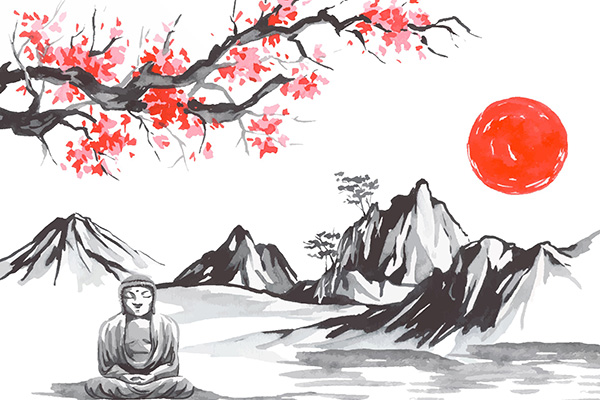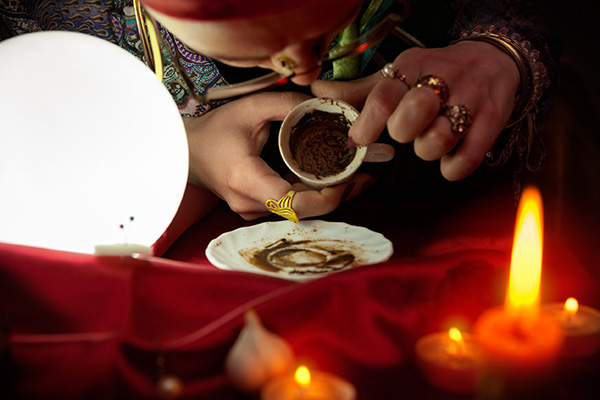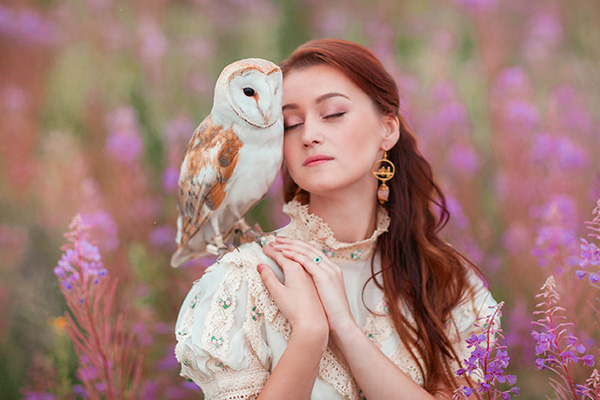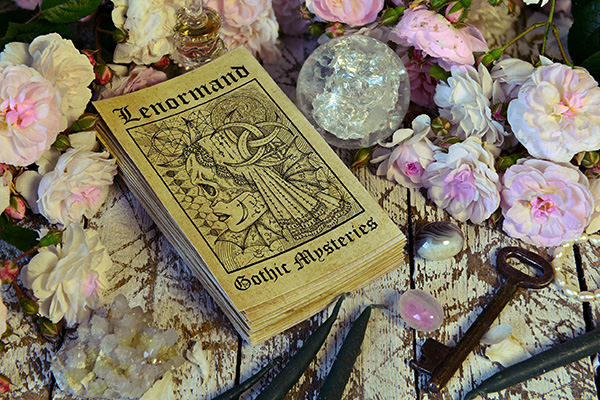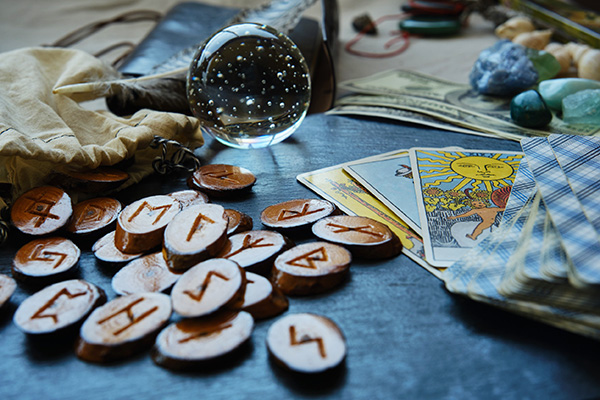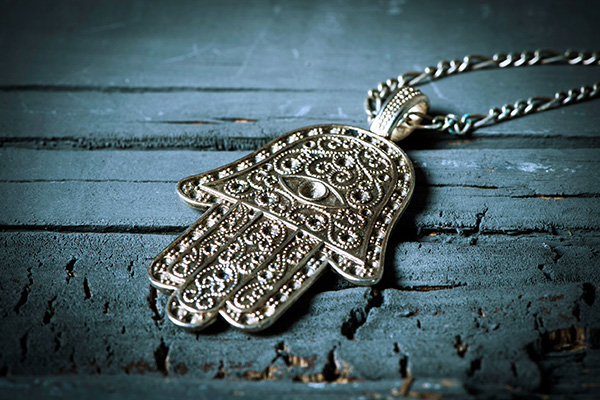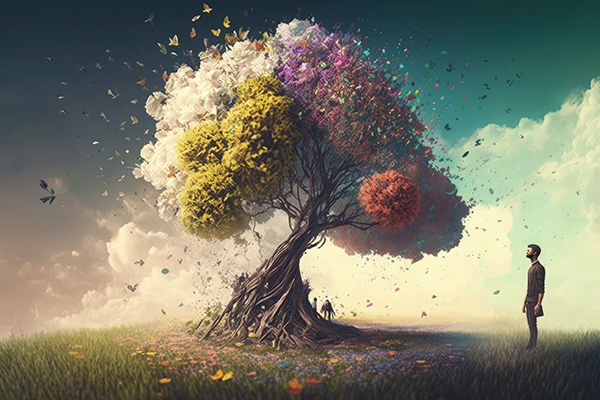 The quest to understand the significance of pain, difficulty, and adversity is a deep and ongoing pursuit of humanity.
The quest to understand the significance of pain, difficulty, and adversity is a deep and ongoing pursuit of humanity.
Throughout the course of human history, our spiritual convictions and theological instructions have provided us with comprehension and purpose in the face of the hardships and distressing encounters of life.
These interpretations provide comfort, guidance, and a sense of peace in the face of adversity as we learn that suffering has a purpose or can lead to spiritual growth, enlightenment, or a deeper connection with the divine.
Our spiritual quest to better understand pain is driven by a deep desire to make sense of life’s challenges and to discover how these difficult experiences fit into the larger tapestry of our existence.
Different viewpoints on pain and suffering are provided by religions and spiritual wisdom traditions across the globe. Each of these perspectives offers its own interpretation of why these occurrences happen and suggests different ways to approach or comprehend them.
These diverse perspectives all share certain common threads: that the origins of pain and suffering lie in the concept of duality; that there is meaning to be found in suffering; and that through faith, reflection, and spiritual practice we can transcend the pain caused by duality and connect with something greater than ourselves.
The essence of the Garden of Eden resides within each of us, although we often perceive it as a distant and mythical past. – Joseph Campbell
Throughout my life, most of my spiritual education has come from the Christian faith. I was raised in a very strict evangelical family that held to a literal interpretation of the Bible. I was also trained and ordained as a Christian minister, so much of my knowledge and understanding of spirituality comes from this religious tradition. However, I remain open to all wisdom traditions and have gained deeper insight into God and spirituality through many other paths over the years.
I have realized that interpreting the Bible strictly as the absolute truth about God goes against its true purpose. By worshiping the Scripture as solely literal and the only source of knowledge and understanding, it unintentionally becomes a “god” in its own way. It goes beyond its intended role by trying to provide answers to all of life’s questions, not just serving as a tool to know and understand God, but to substitute God Himself.
This perspective turns the Bible into an idol or totem. Several passages in the Bible highlight the importance of directly worshiping only God and avoiding the creation or adoration of physical representations or idols. Idolatry is anything that stands above ultimate reality, our direct connection with the Holy Spirit, and our innate love for God.
The Bible should not be worshipped, but rather seen as a valuable resource that can help us develop a deeper understanding and connection with the infinite grace and love of God. It is important to approach it as a tool for spiritual growth and learning, rather than as the ultimate and definitive authority.
The texts in the Bible serve various purposes, one of which is to provide insight into the nature of human suffering, grief, and our capacity for a meaningful relationship with God’s love. However, in order to fully comprehend and benefit from its spiritual teachings and guidance, it is essential to embrace the profound symbolism and allegorical aspects of the text, rather than attempting to interpret everything literally.
These are a few of the discoveries I have made while embarking on my personal spiritual development.
The Story Of Creation
The Genesis creation narrative, well-known to many, presents a depiction of a world brought into existence solely by God. Within this world, God fashioned humanity in the likeness of the divine, within a beautiful and flawless garden, along with two extraordinary trees. One of these trees is referred to as the Tree of Life, which bestowed abundance and perfection upon the garden. The other tree was called the Tree of Knowledge of Good and Evil. God cautioned the man and woman, known as Adam and Eve, that consuming from this latter tree would lead to their eventual demise.
As the story progresses, the man and woman were ultimately persuaded by a serpent to consume the fruit from the Tree of the Knowledge of Good and Evil. The serpent holds significance as it symbolizes rebirth, immortality, transformation, healing, and life in various metaphysical traditions throughout history. This diverges from the traditional portrayal of snakes I learned as a child, where the serpent was viewed as the embodiment of evil, opposed to God, and maliciously sought to ruin God’s flawless creation by bringing about the downfall of humanity.
Today, I grasp the meaning behind the serpent symbolizing eternal life. In my understanding, within the story’s context, the temptation did not happen randomly or due to an evil presence within the paradisiacal setting. Instead, it occurred as a result of the garden’s intended purpose and fate. As the Tree of Knowledge of Good and Evil existed from the start, the longing to consume its fruits was bound to reveal itself as a deliberate design.
Banish me from Eden if you will; but first let me eat of the fruit of the tree of knowledge! ~ Robert G. Ingersoll
The Emergence of Duality
The key point to keep in mind regarding the Tree of the Knowledge of Good and Evil is that it is not inherently negative or “evil.” Instead, it represents the introduction of duality into human awareness: the understanding of two conflicting realities within a state of perfection. In the flawless Garden of Eden, there was nothing within human existence that could contradict the inherent “goodness” of their surroundings. In fact, this had been affirmed by God in previous chapters.
After partaking from the Tree of Knowledge, humanity’s initial encounter with contrast arises when they become aware of their nudity. They become conscious of their distinct existence separate from the surrounding world, prompting a desire to protect themselves from this newfound awareness. Despite their mistake leading to further suffering, they exerted strenuous efforts to cover up independently.
Duality is a notion present in different religious, philosophical, and spiritual beliefs, suggesting the presence of two essential forces or principles that shape the fundamental structure of existence. It suggests that the universe, creation, the world, life itself, and even human nature are comprised of or influenced by contrasting elements like good and evil, light and darkness, spirit and matter, or order and chaos.
In many traditions, spiritual duality is seen as a framework for understanding the complexity of existence and human experience. In Zoroastrianism, for example, there’s a clear dualistic cosmology of good and evil deities in constant conflict. Similarly, in Taoism, the concept of Yin and Yang represents interrelated and opposing forces that interact to form a dynamic system in which the whole is greater than the sum of its parts.
Duality is mainly utilized to examine and clarify the sources of pain, suffering, and evil, along with the meaning of life and the journey towards salvation, enlightenment, harmony, or transcendence.
The Persistent Love of God
The subsequent event in the tale of creation involves a meeting with God. God actively sought them. When I initially learned the literal understanding of this narrative, I was informed that the “sin” or wrongdoing that transpired after their consumption of the fruit led to a disconnection between the inhabitants of Eden and divinity. It was believed that God and evil could not exist together. However, this initial encounter reveals the contrary to be true. Despite the fact that duality caused them to embrace both good and evil, it did not sever their connection to eternal love. This love persisted in pursuing them even after they ate from the tree.
It still does today. The pursuit of the Divine for the attention of humanity has always persisted and will always persist. I am convinced that this Supreme Love has persistently sought me and is persistently seeking you. Thus, the symbolic image of God seeking the two naked and afraid humans in the garden represents God’s persistent search to connect with humanity regardless of our state of mind or being.
Immortality is what the mortals must try to achieve if they want to live up to the world into which they were born ~ Hannah Arendt
The Serpent of Immortality
The initial act of the Divine was to address the serpent. As a symbol, the serpent signifies the everlasting aspect of our being. Hence, it is crucial for us to grasp that God did not eliminate the serpent but instead subjected it to slither on the ground and created a conflict between humans and the serpent. Furthermore, God proclaimed that human descendants would eventually crush the serpent’s head, but the serpent would retaliate by biting their heels.
Because the snake represents immortality, what happens here is that man’s experience of immortality is diminished or downgraded. It doesn’t disappear or end, which is why it is still expressed in many spiritual traditions and teachings about the afterlife, rebirth, and so on. Immortality exists, but our full human understanding of it is lost or obscured.
More importantly, because of immortality and dualism, there is also good and evil in the afterlife. The only logical conclusion is that the duality we experience in mortal life must also be eternal in the afterlife. Granted, not all religious traditions view the afterlife as dualistic in nature, but it is a common belief in many. This is the nature of the serpent. Immortality exists and is often feared.
God also says in Genesis that the sons of the woman would crush the head of the serpent, but the serpent would respond by biting his heel. This is the rejection of the eternal or immortal nature of our existence, but even though the head is crushed, the serpent (immortality) will strike back. This represents our own struggle with the nature of our human experience and the concept of eternal life.
Humanity’s fascination with death has led to the creation of belief systems aimed at negating our inherent immortality. This is evident in the rejection of any concept of an afterlife and the denial of God’s existence.
The Nature of Pain and Suffering
In Genesis, the subsequent significant progression occurs when God addresses humanity and declares that they too are subject to “curse,” which entails facing difficulties, suffering, and hardship. This encompasses the struggles in daily life, exemplified by the necessity to exert significant effort for survival, as well as the pain involved in childbirth, symbolizing the renewal of life.
I was previously taught that God’s actions in this were driven by anger and wrath, but my current belief is that this is actually a significant blessing. When we perceive pain within the framework of duality, it appears as a dreadful curse. Taking this interpretation literally would lead us to view God as lacking love and reliability. Nevertheless, it is the inherent nature of our dualistic existence that gives rise to such judgments.
Pain is not our enemy. It is an honest teacher, telling us when there is something in our situation that needs to be changed or addressed. Both pleasure and pain are not just psychological states, but spiritual experiences that can lead to deeper insight, growth, and understanding of the true nature of our existence.
Our resistance to pain is represented in Genesis by the symbolism of nakedness. It represents how we became aware of duality, that parts of us are “good” and others are “bad” or “evil. When we resist pain because we conceptualize it as “bad” or “evil,” we are essentially judging and creating resistance. The result of resistance is suffering, which is represented in this story as the expulsion of the man and woman from the Garden.
Instead of resisting the duality in our human existence, we must recognize and accept both pleasure and pain as essential aspects of life, each offering opportunities for learning, transformation, and connection with God. By embracing duality rather than trying to escape it, we achieve a more harmonious and balanced approach to life, recognizing the role of both pleasure and pain in the spiritual journey toward enlightenment, self-discovery, or connection with the Divine.
Helen Keller once stated that even though our world is plagued with suffering, it is also abundant with the triumphs over it.
Birth of the Human Ego
The next step in the Eden story is clothing. To give them a method of dealing with their newfound awareness of good and evil, God, in absolute love, covered them so that they would not have to deal with the shame of their “nakedness” all at once. An insulation was constructed to deal with their “nakedness” in a way that would allow them to exist without having to completely isolate themselves. Thus the human ego was born – a means of experiencing the agony of duality and resistance to pain, which is suffering, without being consumed by it.
The ego is beneficial as it enables us to persist and search for truth. However, the ultimate objective is not ego but being vulnerable and open. It involves realizing that the events unfolding in our lives are neither inherently positive nor negative, but simply exist. The ego serves as a temporary shield to safeguard our emotions until we are prepared to embrace reality without any prejudice. It prevents us from completely disconnecting from what is real, a state known as psychosis.
The Kingdom of Heaven
Spirit also communicated to me that this narrative is not an actual occurrence, but rather a representation of life’s experience. It symbolizes the daily challenges we encounter and our path towards growth. Eden is still accessible to us at present. This is what Jesus intended when he stated, “The kingdom of heaven is within you.” It pertains to the inherent reality of existence and the fulfillment of non-judgment. To attain this, we need to let go of categorizing things as good or evil and instead simply embrace what is, whether it brings pain or pleasure. Pain can lead us to a deeper comprehension of our essence, while pleasure can resonate with the goodness of God within us.
Understanding the biblical creation story in this way resonates with my spiritual path. It may or may not resonate with you. I’m not asking you to adopt my belief system; in fact, I don’t want anyone to simply adopt my belief system. Belief is simply a state of mind that helps us move into a higher reality. It is inevitable that many of my current beliefs are flawed or my understanding is limited. My purpose is to share what I have experienced as a higher reality, a reality that accepts things as they truly are.
Suffering is always a resistance to something that, through our duality, appears inherently bad or good in our experience. The practice I want you to consider is the complete acceptance of what is happening in and around you without judgment. Tell yourself that it is okay. If you feel pain, give yourself permission to feel the pain. Allow yourself to ask it why it is there.
Embracing The Wisdom of Pain
I believe it was only after my father passed away and I had the opportunity to take care of him during his final six months that I truly started to see pain as a teacher and advisor. The sadness that accompanies such a loss is a normal reaction. As I navigated through the mourning process with guidance from my inner self, I discovered the importance of understanding the reasons behind my pain. There were times when I needed to cry, and occasions when I felt anger, but I always accepted and honored my emotions without passing judgment.
As I continue to experience this process of mourning, there are moments where I am reminded that the pain has become more bearable and has even become a treasured companion. It has allowed me to gain a deeper comprehension of life and a more authentic connection with my spirituality.
You couldn’t relive your life, skipping the awful parts, without losing what made it worthwhile. You had to accept it as a whole ~ Stewart O’Nan’
The Return To Eden
I firmly believe that the sole path to connect with God is by embracing both good and bad aspects without making any judgments. Love is achieved through acceptance. To clarify, love means accepting without judgment, and in my perception, God embodies love. God exists in everything around us- the birds, the trees, the walls, the floor, and in each of us. The essence of God’s love resonates through all elements, including our suffering, and consistently guides us towards greater acceptance. This is the genuine essence of faith.
When we accept everything that comes into our lives as the nature of God, we find the Tree of Life again. The ability to experience life fully without judgment, the Tree of the Knowledge of Good and Evil.
This could be a novel idea for you, and that’s perfectly fine. Allow yourself some time to ponder, contemplate, or engage in prayer about it. Dedicate a few moments each day to live without judgment, and eventually, you’ll gain a better understanding of your suffering. Recognizing the presence of spirituality is a gradual journey, but my advice to you is to always persevere in this journey.
Let me share another personal example. One of my major challenges was dealing with being overweight in a society that idealizes thinness. I used to view fat as negative and thinness as positive. This perspective caused me a lot of pain for a long time. But when I eventually understood that there is nothing fundamentally wrong with being overweight, my perspective changed and I was able to find peace with myself again. Occasionally, I still struggle with these negative thoughts, but my experience is evolving in a way that now I am living in a state of contentment rather than self-imposed suffering.
In Matthew 7:7-8 of the New Testament, Jesus delivers a straightforward message. He states that if you ask, you will receive; if you seek, you will find; and if you knock, the door will be opened to you. It emphasizes that everyone who asks receives, those who seek find, and those who knock have the door opened for them.
Have patience with yourself and keep going. If you didn’t already have some perseverance, you wouldn’t be reading this. Understand and fully embrace this fact. Regardless of the time it takes to reach a better place, it will always be there, patiently waiting for your return.
|
 About The Author: Cosmic Coach About The Author: Cosmic Coach
James, also known as Cosmic Coach, is a Christian Minister, teacher, and Energy Guide. He has possessed the ability to see and communicate with Angels and Guides since he was just 7 years old. During his teenage years, he realized the special connection he had and began praying for others at his family’s Christian church, where he would receive direct messages and healing energy from the Spirit. As he grew up, he pursued ordination and has remained connected to the Christian Church to this day. After being mentored by an exceptional psychic woman, he developed his own set of tools and started his career as a full-time psychic. James has become proficient in numerous techniques that enable him to connect with his clients on a deep emotional level. He is a Reiki Master with expertise in various traditions, and is skilled in crystal healing, card readings, and relaying detailed messages from Angels and Guides. James constantly strives to expand his knowledge so that he can assist as many clients as possible. If you’re interested in a personalized and unique reading, you can find Cosmic Coach at PsychicAccess.com.
|
How to Deal with Pain: Lessons from a Christian Mystic
Pain is an unavoidable part of life, whether it is physical, emotional, or spiritual. Everyone experiences pain at some point, and navigating through these difficult times can be overwhelming. However, Christian mystics offer valuable insights that can provide guidance and comfort. They have a unique perspective on pain, considering it an opportunity for personal growth, transformation, and a closer relationship with God. In this article, we will explore their teachings on how to cope with pain.
1. Embrace the reality of pain: Christian mystics stress the importance of acknowledging and accepting pain as a natural part of life. Instead of avoiding or suppressing it, they encourage individuals to embrace their pain and see it as a catalyst for spiritual growth. By facing pain directly, we can learn valuable lessons about ourselves, our limitations, and our reliance on God’s grace.
2. Seek solitude and silence: Christian mystics often find solace in solitude and silence as a means of coping with pain. They believe that in the stillness of being alone, one can have a profound encounter with God. By creating space for silence and reflection, individuals can find comfort and inner peace amid their pain. This practice enables a deeper connection with God, allowing us to draw strength and find solace in His presence.
3. Practice surrender: Christian mystics emphasize the significance of surrendering to God’s will in times of pain. They believe that by surrendering our pain to God, we can find healing and transformation. Surrendering does not mean giving up or resigning oneself to suffering; rather, it is an act of trust and faith in God’s plan. By relinquishing control and entrusting our pain to God, we open ourselves to His healing power and guidance.
4. Cultivate gratitude: Gratitude is a powerful tool for navigating pain. Christian mystics encourage individuals to develop a spirit of gratitude, even in the midst of suffering. By focusing on the blessings and gifts that still exist in our lives, we can shift our perspective and find hope amid the pain. Gratitude fosters trust in God’s goodness and provision, enabling us to find strength and resilience.
5. Seek support and community: Christian mystics emphasize the importance of seeking support and community during times of pain. They believe that sharing our pain with others can bring comfort, understanding, and encouragement. By connecting with others who have experienced similar struggles, we find solace in knowing that we are not alone. Supportive relationships can provide practical help, emotional support, and spiritual guidance, making it easier to navigate through the pain.
6. Engage in contemplative practices: Christian mystics often engage in contemplative practices such as prayer, meditation, and reading scripture to cope with pain. These practices help individuals connect with God on a deeper level and find comfort in His presence. By immersing ourselves in these spiritual disciplines, we can find strength, peace, and guidance amid our pain.
In conclusion, dealing with pain is a universal experience. Christian mystics offer valuable insights on how to approach pain from a spiritual perspective. By embracing the reality of pain, seeking solitude and silence, practicing surrender, cultivating gratitude, seeking support and community, and engaging in contemplative practices, individuals can find comfort, healing, and personal growth amid their pain. These teachings remind us that pain is not the end of the journey but rather a stepping stone towards a deeper connection with God and a greater understanding of ourselves.
Continue reading →


